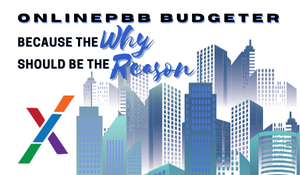Line item budgeting has been a staple of local government administration for the past 100 years. However, this approach is not effective at meeting today’s complex community needs.
To ensure funds are allocated to the most impactful programs and services, many local governments are adopting priority-based budgeting (PBB), which goes beyond the line item to maximize the impact of budget allocations, provide insight into how much programs and services really cost, and align resources with community priorities.
How Priority-Based Budgeting is Different from Line-Item Budgeting
PBB and line item budgeting aren’t mutually exclusive. Many city and county governments are required by law to use account-based budgeting systems. However, adding PBB practices to the budgeting process helps connect those line items to prioritized objectives and outcomes.
One major difference between the two budgeting methodologies is how annual adjustments are made. Traditional budgets apply across-the-board cuts and increases at the departmental level. This means that a 10 percent budget cut affects all programs equally, regardless of the impact an individual program has on community well-being.
Conversely, PBB uses data-driven decision-making to adjust allocations at the program level. Each year administrators review performance metrics and get community input to determine where funds can be reduced or increased to best meet needs.
Another difference is that line-item budgets provide limited visibility into exactly what public funds are being used for. Priority-based budgeting makes it easy for the public to understand how funds are allocated to specific programs and services and to see what those funds are accomplishing.
How Priority-Based Budgeting is Different from Line-Item Budgeting
Program and priority-based budgeting processes both start by creating a program inventory and allocating costs to programs.
Priority-based budgeting then goes a few steps further to evaluate and score programs based on desired outcomes (safety, economy, infrastructure, climate, equity, sustainability) and align budgets with community priorities by reviewing service levels and efficiencies to reallocate and optimize resources.
Program-Based Budgeting Example
The city of Tulsa, Oklahoma is a great example of program-based budgeting in action.
Tulsa’s 50-year-old budgeting system couldn’t keep pace with today’s community needs. To align funding with community priorities, city leaders decided to implement program-based budgeting.
Nineteen departments participated in the program-budgeting initiative, creating a total of 474 programs.
As a result of this initiative, the government is now able to:
- Provide access to up-to-date, unsiloed data for decision-making.
- Prioritize funding for programs.
- Increase transparency, accessibility, and understanding for residents about how funds are being spent.
- Embed equity and community involvement into city processes.
The Benefits of Priority-Based Budgeting
One of the main benefits of budgeting based on priority instead of line items is that it helps local governments make data-driven decisions to align budget resources with community priorities and provide the services people care about and need most.
With full visibility into the budget, administrators can access the data they need to answer key questions, including:
- What programs do we offer?
- How much does it cost to provide those programs?
- Why do we offer these specific programs?
- How can we provide these programs in a way that supports our priorities and intentions?
PBB also enables local governments to work around limited resources and identify the best way to fund programs, whether by freeing up or reallocating existing funds or exploring ways to generate new revenue through fees, taxes, and similar opportunities.
The GFOA’s Principles of Priority-Based Budgeting
The Government Finance Officers Association (GFOA) has outlined a set of principles to guide government adoption of priority-based budgeting.
- Prioritize services
- Do the important things well; cut back on the rest
- Question past patterns of spending
- Spend within the organization’s means
- Know the true cost of doing business
- Provide transparency of community priorities
- Provide transparency of service impact
- Demand accountability for results
Priority-Based Budgeting Example
The government of Salt Lake City, Utah applied the GFOA’s principles of priority-based budgeting as part of the Results for America - City Budgeting for Equity and Recovery initiative in 202
The city piloted the program in the finance and police departments, partnering with ResourceX to establish baseline costs for programs and develop a unique scoring matrix specific to Salt Lake City.
During the initial deployment, the finance and police departments saw exceptional results, including:
- Robust program data.
- Visibility into the cost of program delivery.
- Alignment to sustainability and equity.
- Reallocation of resources to maximize the programs delivering on outcomes.
Priority-Based Budgeting in the Real World
More and more local governments are beginning to recognize the need to adjust their approach to budgeting to meet the changing needs of their communities. PBB is gaining traction as an effective addition to traditional budgeting processes.
Download the 2022 Impact Report to learn more about how priority-based budgeting works and why cities around the world are being recognized for PBB-driven successes.








